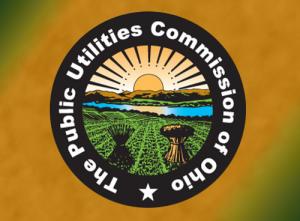Ohio Eyes More Competitive NEM Offerings

Maintaining that adoption of new, uniform, statewide regulations on net energy metering (NEM) would provide distributed generation (DG) customers with more certainty while simultaneously “foster[ing] a competitive marketplace for innovative products and services,” the Ohio Public Utilities Commission has instituted an updated set of rules governing opportunities for net metering.
The commission’s action came as part of a legislative mandate that requires all state agencies to review their rules and regulations at least every five years. In assessing the propriety of its existing NEM rules, the commission determined that various provisions therein should be amended. It explained that the modifications were necessary given the proliferation of DG installations at customer premises, especially rooftop solar equipment. Because net metering programs allow consumers with self-generating capabilities to return to the grid any output that exceeds their own needs, and be compensated or credited for such surplus generation, the commission deemed NEM to be instrumental in advancing state policies advocating diversity among generation sources and electricity suppliers.
According to the commission, such diversity depends in large part on further development of DG and renewable energy projects, including at individual customer premises. At the same time, though, the commission said it was cognizant that many electric utilities have begun to balk at current net metering requirements, claiming that continued growth in DG is flooding the market with excess self-generation from customers, which has rendered present NEM compensation schedules no longer economic. The commission answered those concerns by revising its existing NEM regulations to become more market-driven.
Under the new net metering rules, both incumbent electric utilities and competitive retail electric service (CRES) providers may conduct NEM programs. However, only those utility ratepayers categorized as standard service offer (SSO) customers would be eligible for NEM directly from the utilities. The commission commented that SSO customers take the generation supply part of their service from the utility rather than “shop” for it through a CRES provider.
By contrast, the commission said, non-SSO customers obtain their generation supply from a CRES provider that the customer affirmatively selects. The commission remarked that inasmuch as net metering is supplyfocused, the point of it being to encourage self-generating DG customers to send any excess generation back to the grid, it made sense for the entity that is responsible for providing the customer’s electric supply in the first place to be the one to administer the customer’s NEM account. The commission thus amended its current net metering rules to permit regulated electric utilities to offer NEM exclusively to SSO customers, with those customers credited for any excess production at the serving utility’s presently applicable rate for SSO supply.
By extension, the commission said, CRES providers would now be explicitly authorized to offer net metering to their own (non-SSO) customers. However, the compensation to be paid a CRES customer for surplus supply returned to the grid would be subject to private negotiations between the customer and the CRES provider. In declining to require CRES providers to set forth specific matrices of monetary credits for their netmetered customers, the commission cited to the voluntary nature of customer contracts with alternative electric suppliers. The commission reasoned that since no consumer is forced to go with a CRES provider, the burden is on the individual to research various suppliers and compare their offers, prices, and terms, including those applicable to NEM.
The commission added that because customers are free to negotiate NEM arrangements with CRES providers, such terms may be structured as a price, rate, credit, refund, or any other measure agreed to by the parties. The commission emphasized that in updating its net metering rules, its intent was to promote more marketbased NEM offerings, whereby consumers can choose from among an array of NEM plans from competing providers. From the commission’s viewpoint, affording CRES providers the ability to develop NEM offerings that differ from those available from electric utilities is one more factor than can stimulate retail competition in the energy arena.
Besides amending its rules to specify that net metering may be offered by electric utilities and CRES providers alike, the commission also addressed the matter of maximum size of a customer’s DG installation in order to qualify for net metering. After examining various proposals thereto, the commission opted to set the limit at 120% of the customergenerator’s electricity requirements as of the time of initial interconnection.
The commission conceded that most of the utilities had strongly objected to that cap, arguing that customers should not be allowed to size their net-metered systems at anything over 100% of the customer’s needs. On the other hand, the commission related, some environmental advocacy groups had staked out a position at the opposite end of the spectrum, contending that there should be no size limit at all on DG facilities. Finding both of those standpoints to be too extreme, the commission concluded that the 120% threshold was the best option. The commission stated that it clearly would be unfair to both utilities and CRES providers to permit customers to install facilities so large as to virtually guarantee continuous and extensive excess production.
At the same time, the commission said, it would be just as unfair to customers to restrict their DG systems to no greater than the customer’s normal consumption, as that would deprive them of a reasonable chance of taking advantage of net metering. In confirming the 120% size limit on DG installations, the commission emphasized that the size cap would be determined as of the time of interconnection with the utility and thus cannot fluctuate from year to year even if the customer’s actual usage does. According to the commission, the timing for setting the size limit, in conjunction with the maximum size itself, confers an appropriate level of protection on utilities and customers alike. Re Review of Chapter 4901:1-10 of the Ohio Administrative Code, Case No. 12-2050-ELORD, Nov. 8, 2017 (Ohio P.U.C.).



